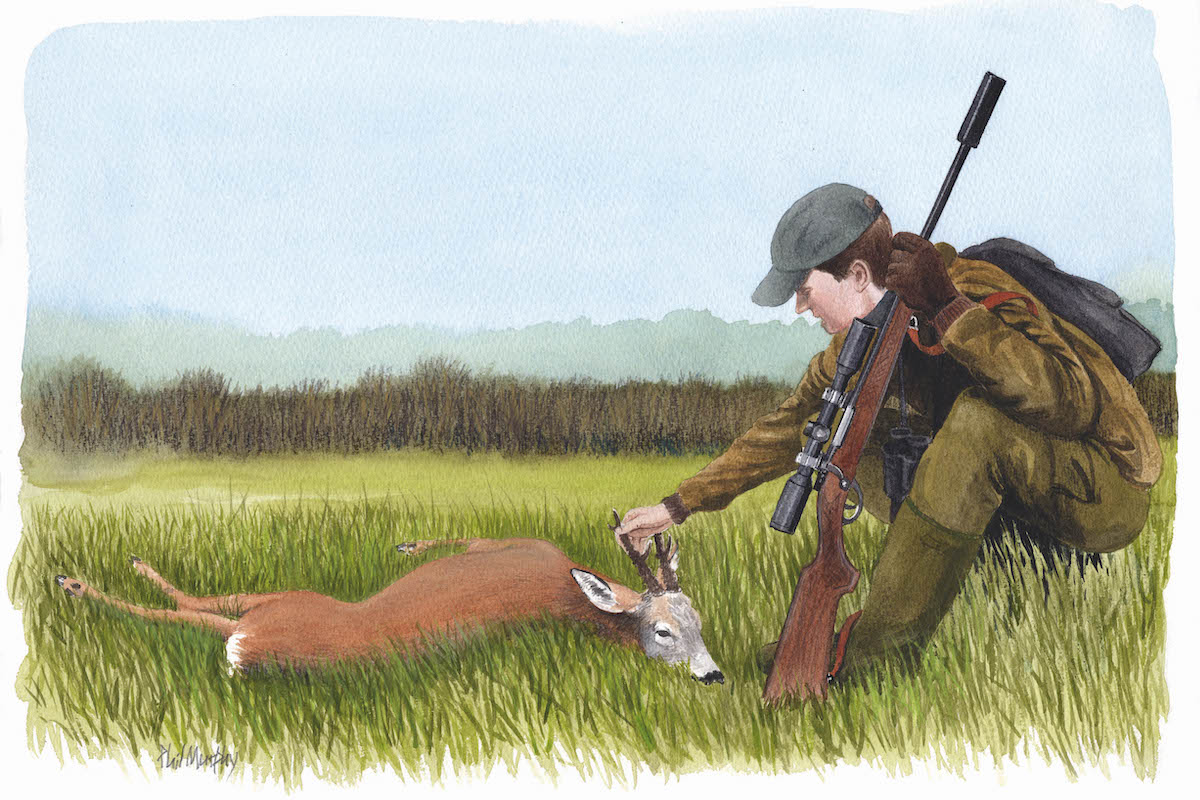The fieldcraft needed to manage deer populations
As the doe season nears its close, Jon Snowdon highlights the fieldcraft needed to help with deer management
Time seems to be moving rapidly. We are already in the last month of the doe season, which ends on 31 March.
It is a period when we try to catch up on the more mature animals. The cull is going smoothly and my observations indicate that the deer have, on the whole, been fit and carry reserves of fat.
That reserve will be reduced as the season progresses because their food at this time is at its least nutritious. The fat reserve is absorbed, enabling them to survive until new growth emerges in spring. We can only hope it comes when expected and there is not a prolonged winter. If that were to occur, we would see a much higher mortality rate.
So far the winter has been mild and as long as that remains the case, the shorter the harder conditions for the deer.
I have been surveying the new ground under my control and have a good idea of the numbers of deer and the ratio between the sexes. This enables me to produce a detailed management plan before I start the control in earnest.
Although it is not a huge piece of land, it has a perfect mixture of habitat with good mature woodland, fell and pasture and is paradise for roe deer. Virtually all the doe seem to have twins, which is always a good sign of fit, fertile deer and perfect territory. In fact, all of the wildlife here seems to be doing well, which is heartening.

The does are looking fit and well and most have had twins
Luck and judgement
One of our deer management group appears to be blessed with lady luck as the roe seem to be walking into him. I know from conversations that many people would prefer to stalk on foot rather than sit in a high seat. I understand that, but we should ask ourselves what are the odds of encountering a deer as we walk through the ground, particularly woodland?
Stalkers have always to be in the right place at the right time and by constantly moving we reduce the chances of that considerably. Our chances of success are increased by alighting on an area then standing for a while, preferably in cover, to see what moves into our view.
Deer, when at the peak of their feeding periods, are constantly moving from one prime area to another and the knack is to be at a prime area just as they pass through. Fieldcraft means we should spend lengthy periods keeping still and causing as little disturbance as possible. Compared with woodland creatures, we are very noisy.
Animals know every sound in their territory. They also know where danger is likely to come from and are always alert to that. Their survival depends on these instincts and the huge number of finely tuned senses they possess. We as a species lost most of that millennia ago. The disturbance that we generate, both noise and scent that swirl around the woods, is obvious to deer. The individual scent, of which we are not even remotely aware, is the equivalent of a red alert to them.

The deer are constantly alert to any sign or sound of danger
Sound waves
We often do not appreciate the noise we create. Yes, we probably cringe when we step on that dry stick that breaks and echoes around the woods like a gunshot, but it is the lesser noises of boots on leaves, or that get stuck in mud, sending the sound waves bouncing around, which highlight our presence just as much.
Believe me, every deer in the parish will know that you are there and, consequently, will be considerably more alert. We are the only living things in those plantations that make such sounds.
It is far better to stealthily settle into a spot and bide your time for as long as you have the patience. It is not unusual for me to lean against a tree and wait for up to an hour.
Try that and you may be surprised at what turns up and is oblivious to your presence. If you follow these four rules your task will be made a lot easier: be patient; don’t be seen, don’t be smelled; and don’t be heard. Easy when you know how.
Tasks in hand
The main task is to ensure that we end the doe season having completed the management plan cull. It looks like we are on our way to doing that but the weather could yet have a say.
Ahead of us is the job of moving high seats that are no longer well-placed and can be better utilised elsewhere. We also have several monitoring sites to survey and to erect.
These are small deer-proof fenced areas where we can monitor the damage to regeneration. They will also make clear what is causing the damage. Deer are not the only culprits. Rabbits, hares and pheasants are also culpable.
The monitoring sites are important because they give us information, one of the factors that ensures the management plans are relevant. If necessary, they are tweaked, to prove the cull figures are not plucked out of the air.








